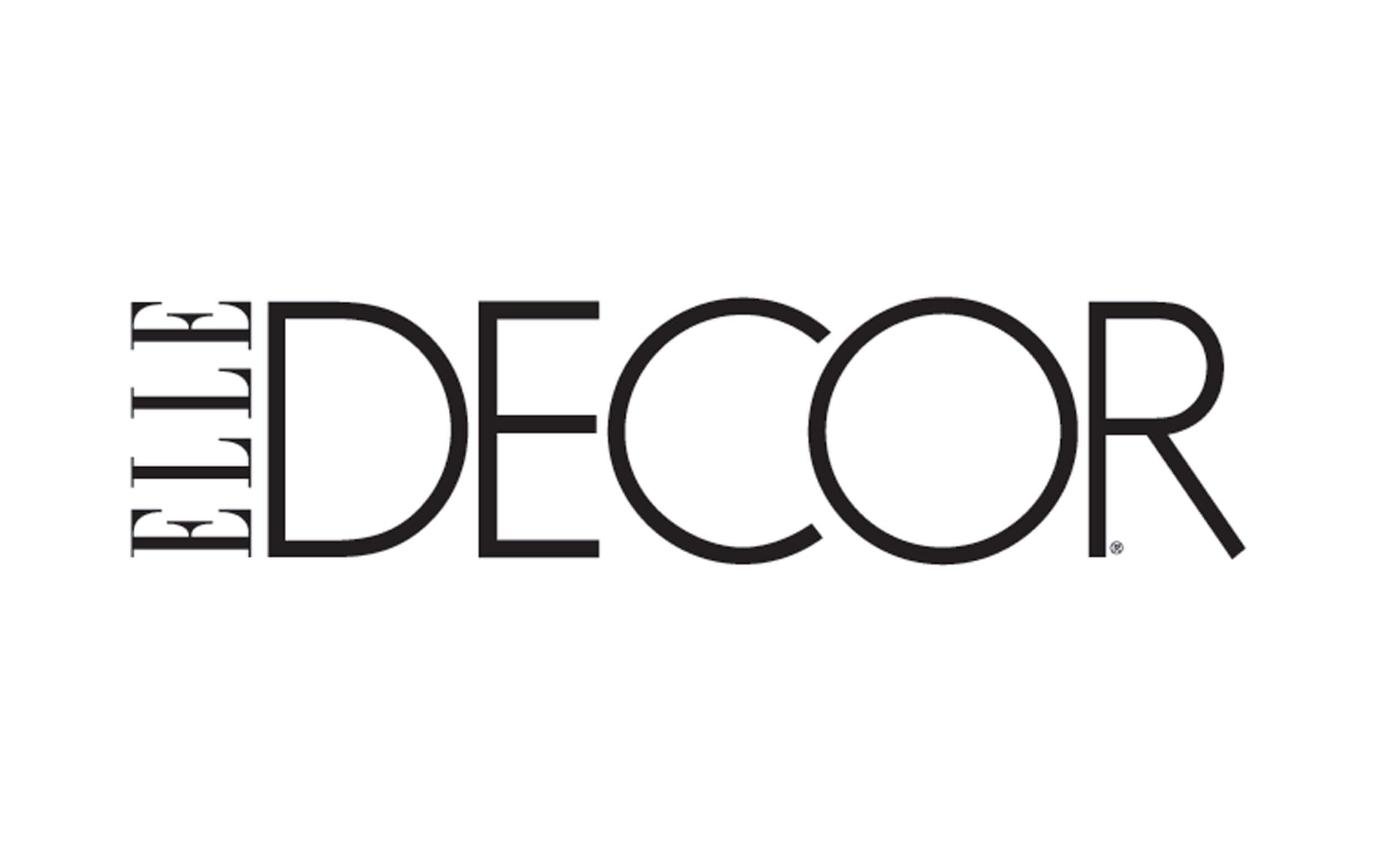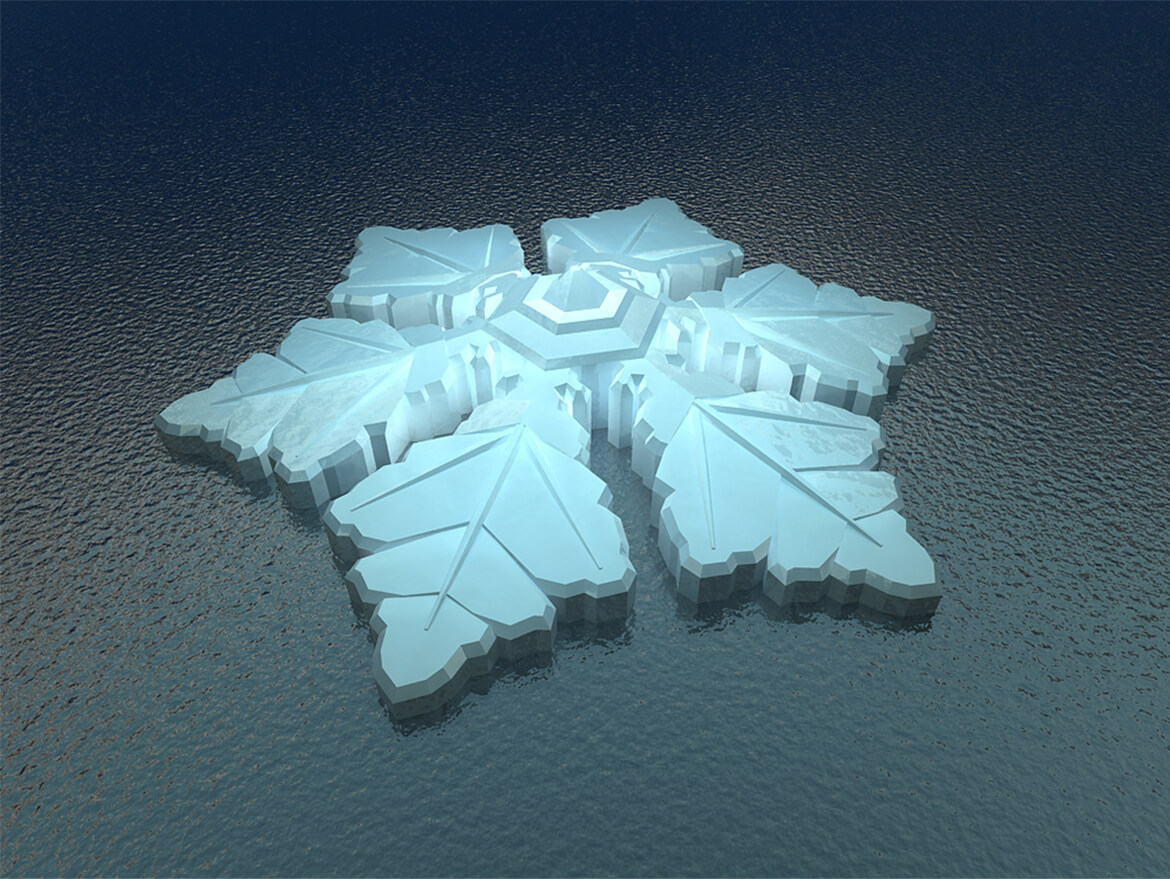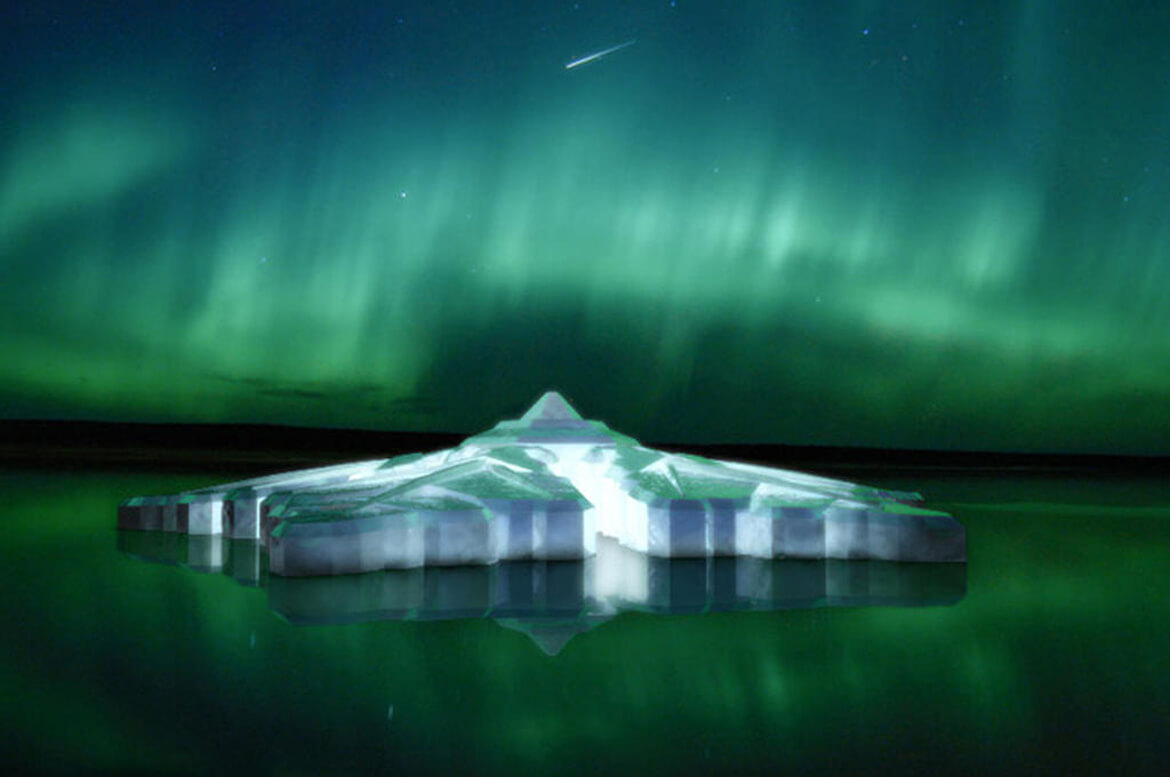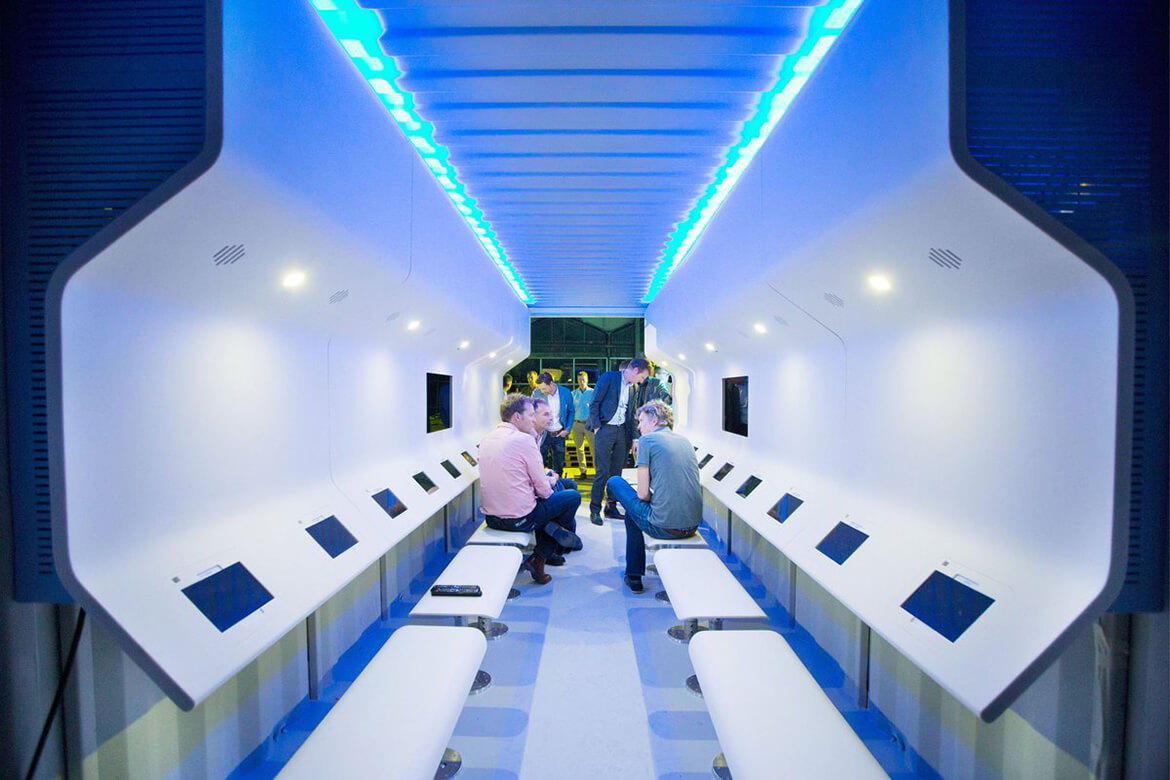By Nordnytt
August.21.2014
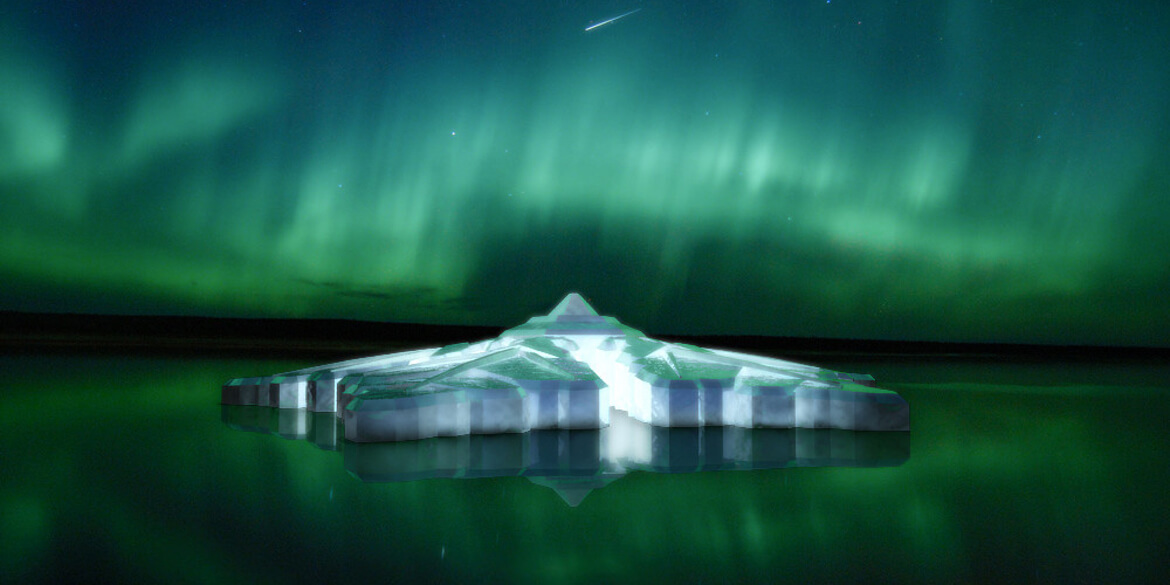
Tromsø kommune har i dag signert en intensjonsavtale med selskapet Dutch Docklands om å bygge et flytende hotell utenfor byen.
Avtalen betyr at kommunen stiller seg positiv til at det femstjerners luksushotellet skal bygges i Tromsø.
Det nederlandske selskapet Dutch Docklands har planer om å bruke 500 millioner kroner på luksushotellet, som skal utformes som en flytende iskrystall, og inneholde 86 rom.
– Vi planlegger å bygge det mest luksuriøse hotellet i den nordlige delen av verden. Det vil bli et unikt femstjerners hotell som vil gi gjestene en opplevelse med nordlyset, men også andre aspekter av Norge og av denne delen av verden, sier Paul van de Camp administrerende direktør i Dutch Docklands.
Selskapet er eksperter på flytende konstruksjoner, og har tidligere blant annet bygget luksushotell på Maldivene.
For pengesterke gjester
Han sier at Tromsø ble valgt på grunn av historien sin, men også på grunn av at byen allerede har utbygd infrastruktur når det kommer til turisme.
– Er det et marked for et slikt hotell?
– Det vil bli et lite hotell, men i den øvre enden av skalaen. Det betyr at romprisene vil bli høyere enn det som allerede finnes på markedet i Tromsø. Vi retter oss mot folk som er villig til å betale for et visst komfortnivå og for å få opplevelser i nordlige strøk. Det er et enormt globalt marked for dette, sier van de Camp.
Nå skal selskapet samarbeide med kommunen om å få på plass de nødvendige tillatelsen, og finne ut hvor det flytende hotellet skal ligge.
Hvor og hvordan det skal bygges er ennå ikke avklart.
– Vi ønsker vanligvis å få gjort mest mulig av dette lokalt. Vi vet at norske håndverkere er kjent for å holde en høy standard, akkurat som nederlandske. Det viktigste for oss er kvaliteten på arbeidet, og får vi dette til lokalt, så støtter vi det, sier van de Camp.
Kommunen positiv
– Vi har skrevet under på en avtale om at vi er positive til at dette hotellet kommer til Tromsø kommune for å etablere seg her. Vi kan bistå med kartmateriale, og når de har funnet fram til hvor de vil at hotellet skal ligge, så kan vi ha et oppstartsmøte, sier Britt Hege Alvarstein byråd for byutvikling i Tromsø kommune.
Hun sier at kommunen nå driver med en revidering av kommuneplanen og en kystsoneplan for Tromsø.
– Vi har ikke tatt høyde for at vi skal ha et flytende hotell i kommunen, så det må vi nå ta høyde for, sier Alvarstein.
Plan- og bygningsloven, reguleringsplaner og ikke minst skipsleden i Tromsø blir førende for hvor hotellet kan ligge, men det blir trolig i en av fjordene rundt byen.
Miljøprofil
– Selskapet har sagt at de ønsker at hotellet skal ligge rundt en times reise unna flyplassen, sier Alvarstein.
Hun peker på at selskapet bak hotellet har en miljøprofil og blant annet samarbeide med UNESCO for å ta vare på miljøet rundt og under der de bygger, så de lager minst mulig fotavtrykk i naturen.
– Det er spennende teknologi som tas i bruk, og ets pennende prosjekt på alle områder, sier Alvarstein.
– Er det ikke allerede nok hotellrom i Tromsø?
– Vi så både under sjakk-OL og Arctic Race at det ikke var rom å oppdrive, så kommunen har ennå behov for flere hotellrom. Men dette er jo et marked som kommer utenom det vanlige. Det vil være med på å forsterke det eksisterende tilbudet i byen, mener Alvarstein.
Click here for the pdf
Click here for the website


